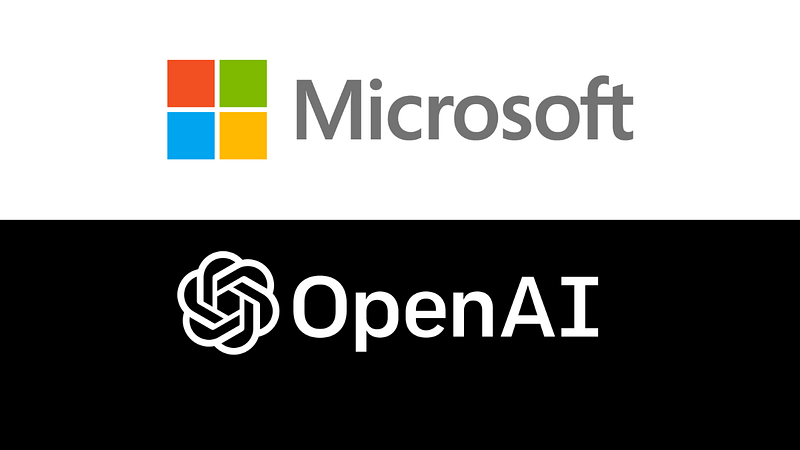In the rapidly evolving world of artificial intelligence (AI), partnerships between tech giants and AI research institutions play an instrumental role in driving advancements and innovations. One such collaboration that has significantly influenced the AI landscape is between Microsoft and OpenAI. This partnership embodies a powerful synergy between Microsoft’s technology and resources and OpenAI’s pioneering research in AI.
Understanding the Microsoft and OpenAI Partnership
Established in 2019, the partnership between Microsoft and OpenAI aimed to accelerate advancements in AI on an unprecedented scale. The collaboration was not just financial — Microsoft committed to invest $1 billion in OpenAI — but also involved a comprehensive agreement to jointly develop new technologies.
A critical aspect of this partnership was the shared objective of developing artificial general intelligence (AGI). Unlike narrow AI, which is designed for specific tasks, AGI refers to highly autonomous systems capable of outperforming humans at economically valuable work, presenting a much more complex challenge.
The Role of Azure in the Partnership
A cornerstone of the partnership was Microsoft’s Azure, a cloud computing service for building, testing, and managing applications and services through Microsoft-managed data centers. Azure provided the robust infrastructure and advanced compute capabilities needed to develop AGI.
Through Azure, Microsoft offered OpenAI a platform to train and test its AI models, providing extensive computational resources. Moreover, Azure’s advanced capabilities in areas like machine learning, analytics, and storage played an instrumental role in powering OpenAI’s research and development efforts.
The Impact of the Partnership on AI Development
The Microsoft-OpenAI collaboration has had a profound impact on AI development, leading to significant advancements and innovation. A notable outcome of this partnership is GPT-3, OpenAI’s third-generation Generative Pretrained Transformer. Powered by 175 billion machine learning parameters, GPT-3 represents a giant leap in AI’s capability to generate human-like text.
Another significant development is OpenAI’s decision to adopt a ‘cooperative orientation.’ Instead of competing with other research and policy institutions, OpenAI pledged to assist them, focusing on creating a global community that addresses AGI’s challenges together. This decision was crucial in fostering a more collaborative and inclusive AI research environment.
Moreover, the partnership has contributed to setting higher standards in AI safety and ethics. Both Microsoft and OpenAI are committed to ensuring that AGI benefits all of humanity and is used in a way that avoids harm to humanity and concentrates power unduly.
Potential Challenges and Future Prospects
Despite the significant advancements resulting from this partnership, several challenges lie ahead. One of the main issues is the ethical and safety concerns associated with AGI. As AGI systems become more advanced and autonomous, it’s crucial to ensure they align with human values and ethics and that robust safety measures are in place.
Another challenge is related to resource distribution. As AGI development progresses, it’s essential to ensure that the benefits of AGI are widely distributed and don’t concentrate power or advantages disproportionately.
Looking forward, the partnership between Microsoft and OpenAI promises to continue driving innovation in AI. While the ultimate goal of AGI is still a long way off, the partnership’s efforts have undoubtedly accelerated progress towards this objective.
The Implications for the Broader AI Community
The partnership between Microsoft and OpenAI has significant implications for the broader AI community. Firstly, it shows the potential of collaborations between tech giants and research institutions in advancing AI. By combining resources, knowledge, and expertise, these partnerships can accelerate AI development and tackle complex challenges.
Secondly, the partnership sets an example in terms of ethical AI development. By committing to safety and ethics, Microsoft and OpenAI demonstrate that responsible AI development is not just possible but also desirable, setting a precedent for other AI developers to follow.
Finally, the partnership highlights the importance of a cooperative approach in AI. As AI continues to evolve, collaborations and shared learning will be crucial in addressing the myriad of challenges that come with AGI development.
Conclusion
The Microsoft-OpenAI partnership represents a pioneering collaboration in the realm of AI. By combining Microsoft’s technology and resources with OpenAI’s innovative research, the partnership has driven significant advancements in AI, bringing us closer to the goal of AGI.
However, as we continue to push the boundaries of AI, it’s essential to navigate the challenges responsibly. Ensuring the safety, ethics, and fair distribution of AGI will be crucial in realizing the full potential of this technology. As we look towards the future, the Microsoft-OpenAI partnership provides both a roadmap for AI development and a reminder of the need for responsibility and cooperation in this exciting journey.
Find more … …
The Dawn of Artificial General Intelligence: A Comprehensive Overview of GPT-4
Leveraging AI-Powered Tools in Microsoft 365 to Optimize Workday Productivity and Efficiency
